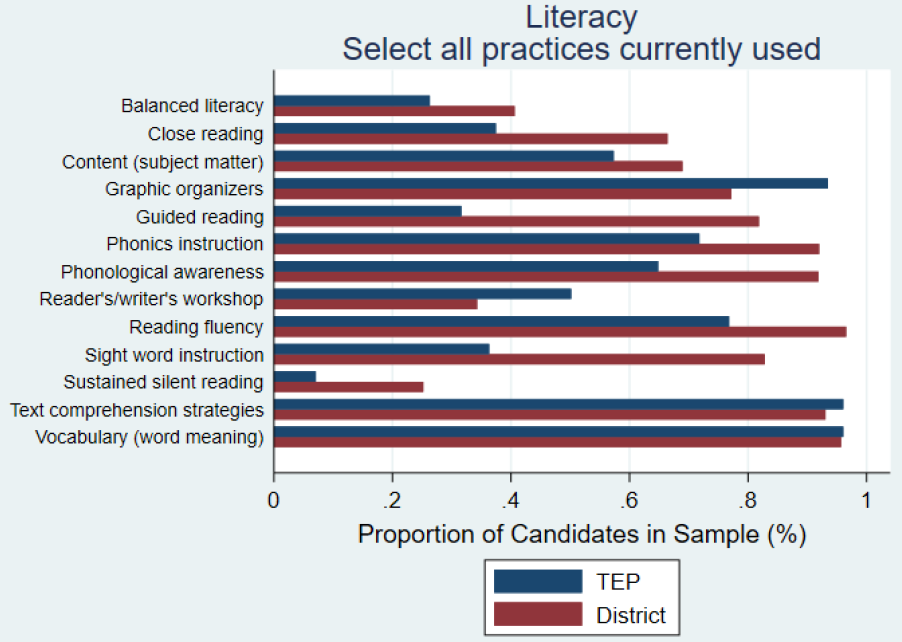From a new study out of Washington comes clear evidence that teachers are more effective reading instructors with special education students when both their preservice preparation and their school district emphasize evidence-based reading practices. Given how hard it is to measure the value of preservice preparation for classroom effectiveness, the finding is one worth noting.
This new CALDER working paper, authored by Roddy Theobald, Dan Goldhaber, Kristian Holden, and Marcy Stein, examines the prevalence of various literacy practices among Washington state's teacher preparation programs and school districts, and then explores the relationship between these practices and special education students' reading gains.
Based on survey data, the researchers found that while evidence-based approaches are not yet universal, the literacy practices generally recognized as evidence-based were more prevalent in school districts than in the programs preparing aspiring teachers.

Graph from Theobald, R., Goldhaber, D., Holden, K., & Stein, M. (2021). Special Education Teacher Preparation, Literacy Instructional Alignment, and Reading Achievement for Students with High-Incidence Disabilities. Working Paper No. 253-0621. National Center for Analysis of Longitudinal Data in Education Research (CALDER).
This misalignment between teacher prep and district instruction clearly matters. When teachers were taught evidence-based reading instruction by their prep programs and their districts emphasized these practices for special education students, their special education students showed an additional (and statistically significant) .04 standard deviations of reading gains.
Conversely, in districts that emphasized balanced literacy practices, students with disabilities had considerably lower reading gains (.055 standard deviations lower). Putting a fine point on it, this approach appears to do active harm to young learners.
